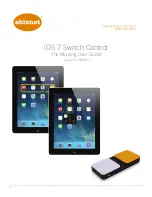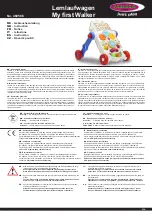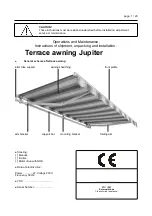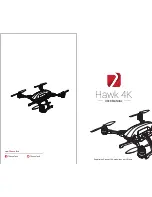
62
Long Range Mount Installation
¤
2005-2010 SR Research Ltd.
produce noisy sample data even if the system is able to track the eye. The corneal reflection
threshold is rather robust at most threshold settings, but typically optimal recordings can be
achieved by reducing the threshold slightly to completely fill out the coloring of the corneal
reflection.
If you are running the TRACK.EXE program as recommended, press C to begin the camera
setup, calibration and validation steps. Refer to the tutorial of Section 3 of the User Manual for
more information about performing the calibration and validation under normal behavioral
laboratory situations.
7.10
Calibration and Drift Correcting with the Long Range System
There are a number of operational differences between the EyeLink 1000 between use in the
behavioral laboratory and in environments where the Long Range amount is typically installed.
The first of these issues has to do with configuring custom calibration layouts so that odd-
shaped spatial areas can be calibrated. A second issue has to do with whether and how to
employ drift correction in conjunction with the EyeLink 1000 and the Long Range Mount.
7.10.1 Calibrating Atypical Spatial Areas
7.10.1.1 Customized Calibration Target Positions
Given the confines of an MRI scanner and different screen and head coil configurations, the
standard calibration of the entire screen area may not always be appropriate. For instance, if a
display projection eliminates the ability of the subject to view the corners of the display (e.g., so
that the bottom part of the display can use more of the bore’s area to present the stimulus),
calibration targets presented in the corners will not be viewable by the subject, and the
standard calibration cannot proceed. Similar issues can arise if the head coil blocks part of the
projection screen (e.g., with the Siemens 32 channel head coil, or some 8 channel head coils).
This presents a problem if one is using the default approach of calibrating the entire screen, as
calibration targets may appear in locations that cannot be viewed by at least one of the eyes,
some of the time.
The EyeLink calibration target positions can be customized, so even if the area to calibrate is
not rectangular, targets can be delivered anywhere in an automated fashion.
Having an observer or two (with highly variable head sizes) report from in the bore on the
monocularly viewable areas of your display with each eye and map out the display coordinates
that define the viewable area. A set of custom calibration points can be generated for your
display region that distributes calibration points throughout the space that can be seen. For an
example of how to configure such a custom calibration please see the discussion on the SR
Research Support Forums:
https://www.sr-support.com/forums/showthread.php?t=68
.
Note that Experiment Builder’s Camera Setup node has specialized support for customized
calibration target positions and also has a facility for calibrating the eye tracker completely
















































